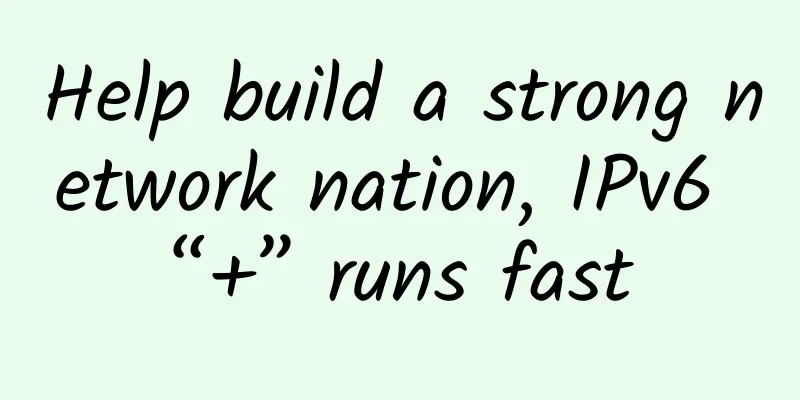Front-end Science: What is an API Gateway? Why is it useful?

|
An API is often referred to as a front door for applications to access data and business logic from backend services. An API is essentially an interface that a piece of software provides to other people or programs, allowing them to interact with that software. When creating an API, you need to choose a programming language (Java, Python, PHP, etc.) to write the API logic. You also need to deploy the API to the server and monitor the API to ensure that the infrastructure has enough capacity to handle a large number of requests. The API gateway abstracts these steps away from you, so you don’t need to write much code or worry about managing the underlying infrastructure; you just need to create API endpoints to which clients can send requests. The major cloud providers all offer fully managed API gateway services:
This article will explain why you should use API Gateways, how they work, and we'll look at examples of API Gateways in real-world applications. What we will cover:
1. Why use an API Gateway?API Gateway is a fully managed service that makes it easier for developers to create, publish, maintain, monitor, and secure APIs at nearly any scale. In the context of cloud computing, “fully managed” means that the responsibility for maintenance and management of the service lies with the cloud provider, which means the underlying infrastructure, software updates, security, scalability, availability, and disaster recovery are all managed by the cloud provider. This abstraction mainly makes the developer's life easier, as they can just focus on developing the service without having to worry about managing it. In this case, the price of this abstraction is a loss of flexibility, and the API gateways provided by most cloud providers have a hard limit on the number of requests per second (RPS) that can be processed. The cloud costs of using a managed service such as an API Gateway are also higher and must be weighed against the higher number of developer days (number of developers * work days) required to build an API from scratch. To truly understand the benefits of using an API Gateway, let’s look at the steps you would follow to design, write, and deploy a traditional API: 「Step 1: Define requirements and scope」
「Step 2: Design the API」
「Step 3: Develop API」
「Step 4: Deploy the API」
「Step 5: Monitor and maintain the API」
With API Gateway, you mainly need to focus on steps 1, 2, and parts of step 3, while the other steps are mostly abstracted and handled by the API Gateway. The main reason for using an API Gateway is to simplify the process of developing and maintaining APIs. 2. How API Gateway worksThe API Gateway does many things at the same time. To understand how the API Gateway works, let's use an analogy. The API Gateway is like the maître d' (French for head waiter), who is usually found in high-end restaurants, although it is a slowly disappearing profession. The Maitre d' is the liaison between guests and restaurant staff and is responsible for:
In short, the Maitre d' is a person in a restaurant who has many talents and responsibilities. From the picture below, we can see how the Maitre d' acts as a communicator between customers and what they may need. The foreman is the communicator between the customers and anything they may need. An API Gateway works similarly, acting as a communicator between a client and the many services it may need to access. The API Gateway acts as a middleman between clients and the many services they may need to access Let's look at what an API Gateway can do in more detail. 2.1 Request VerificationThis involves inspecting incoming requests to confirm that they meet predefined criteria before forwarding them to backend services. This may include checking the structure of the request, validating data types, ensuring required parameters are present, and validating query parameters, headers, and request bodies against schemas. By doing this, the API Gateway acts as the first line of defense, preventing poorly formatted or malicious requests from reaching the backend systems. Using the restaurant analogy, this would be similar to a maitre d' waiting at the door to greet guests, but remember, this is a fine dining restaurant, so the maitre d' makes sure guests are dressed in accordance with the restaurant's dress code - similar to validating incoming API requests against a predefined pattern. 2.2 Authorization and AuthenticationAuthentication is the process of verifying the identity of the user or service making a request, typically through credentials such as a username and password, tokens, or API keys. After authentication, authorization determines which resources or actions the authenticated entity is authorized to access or perform. API gateways are usually integrated with identity providers and support various authentication and authorization mechanisms, such as OAuth , JWT, API keys, etc. They ensure that only legitimate, authorized requests can pass through the backend services. Authentication focuses on "who", while authorization focuses on "rights". For the maitre d’ who greets guests into a restaurant, identity verification involves the guest proving they are who they say they are, usually by presenting some form of ID with a photo that can be matched to their face. Authorisation will involve checking whether they have a reservation, meaning they are authorised to enter the restaurant and order food. 2.3 Rate LimitationRate limiting involves controlling the number of requests a user or service can make within a specified time frame, usually defined as a limit on the number of requests per second (RPS). Rate limiting helps avoid overloading backend services, ensuring they remain available. Rate limiting is also used as part of a cost control strategy, as you will pay for every request sent to the API Gateway. The API Gateway can implement different rate limiting strategies based on the accessed user, service, or endpoint. Using our restaurant analogy, imagine that we have guests in our restaurant, who are all verified, authenticated, and authorized to enter the restaurant. But these guests are extremely hungry and thirsty, and are constantly ordering food and drinks. At some point, this becomes unmanageable for the restaurant. The chefs and waiters are overworked and don’t have the capacity to take any new orders, they are running out of plates and cutlery, and the kitchen is running out of food. The chef can step in and limit the number of orders a customer can place, for example, limiting the number of entrees or bottles of wine that can be ordered per hour. Limits ensure that the restaurant is not overloaded and is still able to serve new customers. 2.4 Request RoutingAn API Gateway manages the routing of incoming requests to appropriate backend services based on various conditions like URL path, HTTP method, headers, or query parameters. It is an integral part of a microservices architecture where different services handle different parts of an API. Going back to our earlier restaurant analogy, depending on the guest’s purpose, the maitre d’ will direct them to the appropriate person or place – diners to the server, guests who just want a drink to the bar, people asking about booking a restaurant event to the event coordinator. 2.5 Request and Response ConversionThis involves modifying requests and responses as they pass through the API Gateway. For requests, this might mean adding, removing, or modifying headers, rewriting URLs, or even changing the request body. For responses, this might involve changing the status code, modifying headers, or transforming the body. This functionality allows the API Gateway to act as an intermediary that can transform requests and responses to meet the needs of the client and the backend services. Backend services can also perform this request and response transformation. The decision about which component (API gateway or backend service) does the transformation is subjective. However, the API gateway is often an ideal place to centralize this transformation with minimal effort, rather than doing custom transformations in each backend service. For example, if a restaurant guest is gluten intolerant, then their order will have to be altered to ensure the meal does not contain any gluten. This order conversion logic can be implemented by the head waiter explicitly indicating which ingredients should be excluded from the menu before sending the order to the chef, or it can be implemented in the kitchen by the head waiter simply telling the chef that the guest has ordered a gluten-free dish and asking him to modify the order accordingly. 3. Real World ExamplesMicroservices architecture is an approach to developing software that breaks large applications into smaller, independent components called microservices. Each microservice is a self-contained unit with a specific function or responsibility within the wider application. The following diagram shows a simple microservices architecture for a basic e-commerce application. API Gateway used in Microservice Architecture of E-commerce Website
In this example, the API Gateway is:
EndAPI Gateway is a fully managed service that makes it easier for developers to create, publish, maintain, monitor, and secure APIs at virtually any scale. Because it is fully managed, it abstracts the work required to manage and maintain the underlying infrastructure - this is handled by the cloud provider that provides the service. An API Gateway acts as a middleman between clients and the many services that need to be accessed, and it handles request validation, authentication and authorization, rate limiting, request routing, and request/response translation. It is particularly useful in microservices architectures, serving as a central entry point for managing, processing, and routing incoming requests to the appropriate microservices, playing a vital role in simplifying client interactions and providing a central interface for a group of microservices. |
<<: A “Cat” Walking Alone on a Narrow Road: Cat.1 and Narrowband Communications (Part 2)
Recommend
[Black Friday] Zgovps: $12.9/year-1GB/20GB/2TB/Japan IIJ/Germany/Los Angeles AS4837, etc.
Zgovps also released a promotion during this year...
Simple test of DogYun Korean data center elastic cloud server
The blog has shared DogYun product information se...
German media: Shenzhen has more 5G base stations than the whole of Europe
The article "Why Shenzhen has more 5G base s...
The Ministry of Industry and Information Technology responded to the withdrawal of 2G/3G networks: an inevitable choice for upgrading
Recently, the Ministry of Industry and Informatio...
How to protect remote workers from cyber attacks?
[[400945]] During the coronavirus outbreak around...
Some works of the first 51CTO Developer Competition have been revealed, waiting for you to add to it!
/* Live to change the world Here, every work may ...
Five API Gateway Technology Options
This article intends to discuss gateways around s...
BGPTO: Singapore CN2 dedicated server $49/month, E3-1230v3/16GB/480G SSD/optional CN2 or international high bandwidth
bgpto is a brand of klayer (started in 2011). The...
RhinoTech: Dedicated servers seckill + 20% off starting at $24.5, US/Japan/Korea data centers
RhinoTech sent an email yesterday about its Augus...
Come to HC to see Huawei "unlock" the "efficient model" for government and enterprises to move from operation and maintenance to operation
[51CTO.com original article] The digital transfor...
Data Center Container Network Technology
Container technology is very popular and often me...
What functions and advantages does 5G technology bring to enterprises?
As carriers pilot fifth-generation cellular netwo...
Software-defined data centers face constant challenges: IT departments need to shift their focus
Virtualization has revolutionized the data center...
What is QoS technology? What are its functions?
QoS (Quality of Service) refers to a network'...
In the 5G era, what is the United States worried about?
Today I want to talk to you about a technical top...









